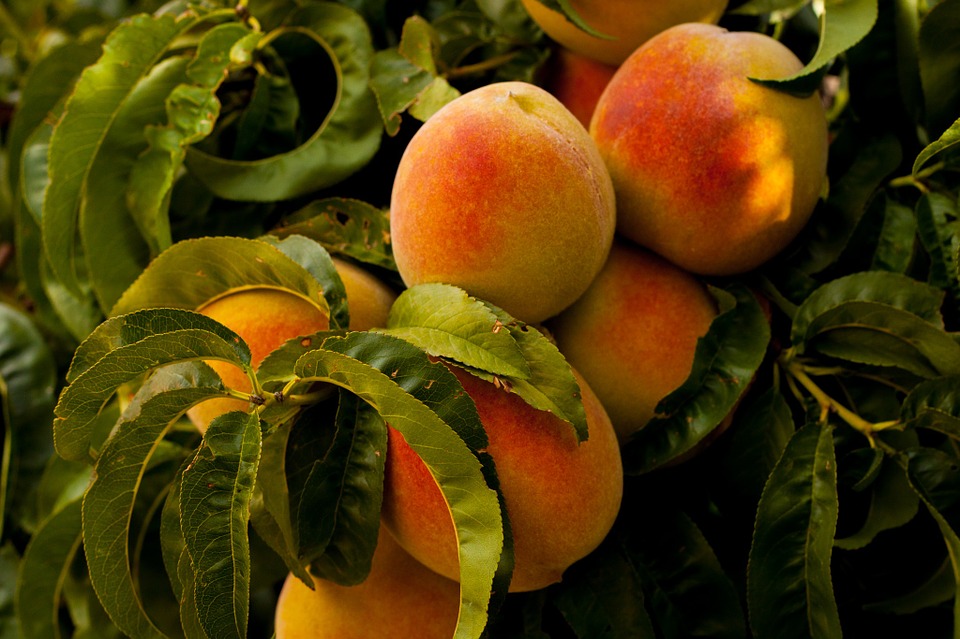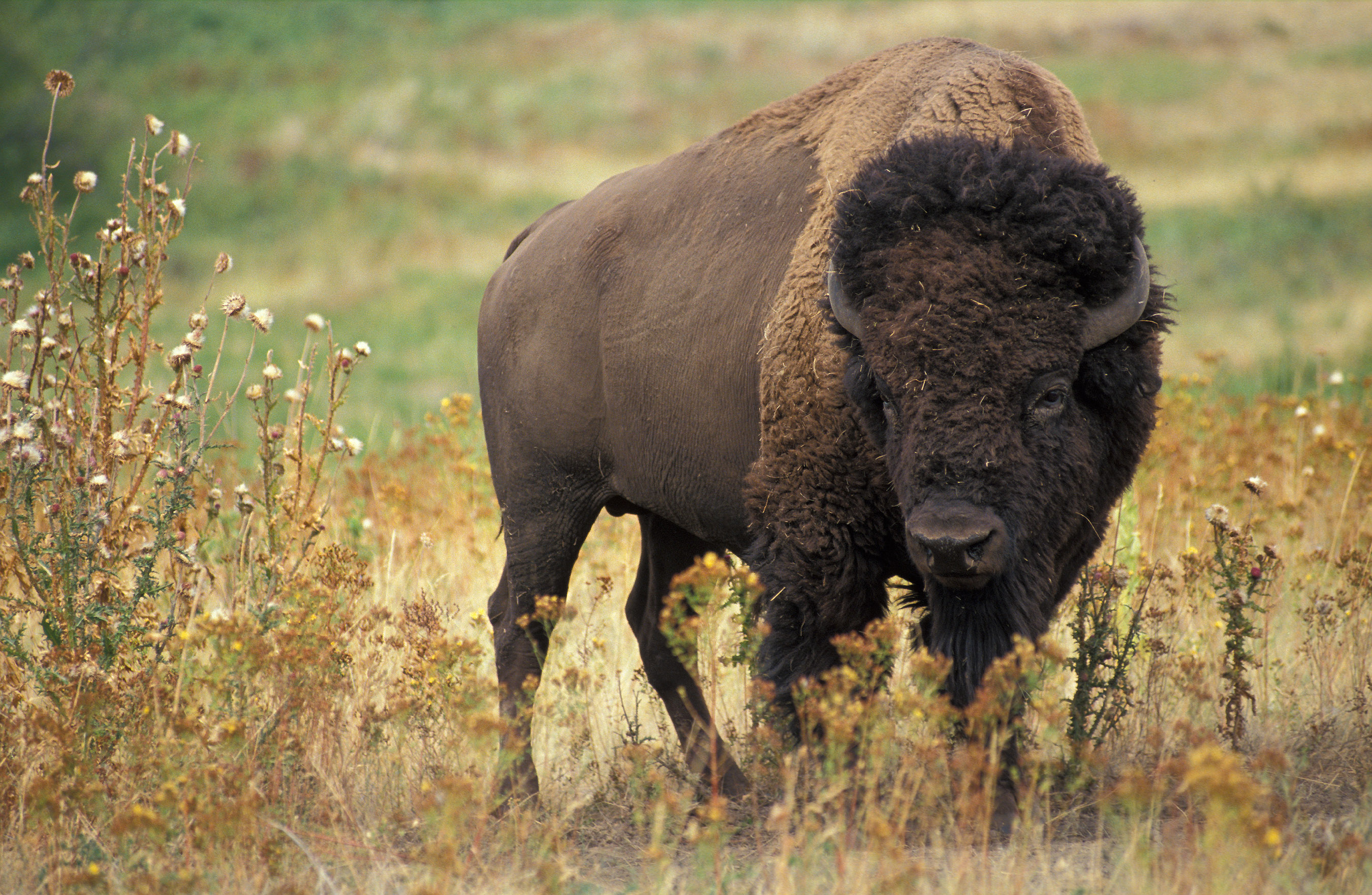The peach is a deciduous tree native to the region of Northwest China between the Tarim Basin and the north slopes of the Kunlun Shan mountains, where it was first domesticated and cultivated. Take a look below for 28 more fun and interesting facts about peaches.
1. Peaches belong to the genus Prunus which also includes cherries, apricots, almonds and plums.
2. The peach is classified with the almond in the subgenus Amygdalus, distinguished from the other subgenera by the corrugated seed shell.
3. Peach and nectarines are the same species, even though they’re regarded commercially as different fruits. The difference between them is that peaches have the fuzzy skin while nectarines don’t.
4. In 2016, China alone produced 58% of the world’s total for peaches and nectarines.
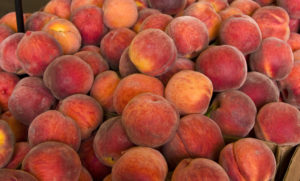
5. Recent evidence indicates that the domestication of peaches occurred as early as 6000 BC in Zhejiang Province of China.
6. The oldest archaeological peach stones are from the Kuahuqiao site.
7. Archaeologists point of the Yangtze River Valley as the place where the early selection for favorable peach varieties probably took place.
8. Peaches were mentioned in Chinese writings as far back as the 10th century BC and were a favored fruit of kings and emperors.
9. There are over 700 varieties of peaches.
10. According to recent research, the selenium in peaches has a positive effect in preventing cancer.
11. Peaches are known to reduce anxiety and are often referred to as the “Fruit of Calmness.”
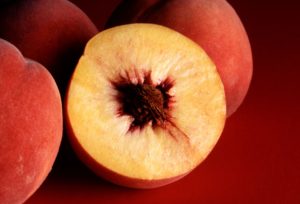
12. In some countries, peaches are the symbol of good luck, protection and longevity.
13. Because they are a rich source of vitamin A and vitamin C, peaches are a natural cure for refreshing the skin.
14. Peach aromas have demonstrated analgesic effects such as reducing the feelings of pain, lifting depression, and creating a sense of well being.
15. Peach trees usually grow in temperate climates because they require low temperature during the winter for the successful development of its flowers.
16. Peach plants require fertilizers rich in nitrogen and constant water supply during the growth.
17. The size of the peach tree depends on its variety, but it can reach between 13 and 33 feet in height.
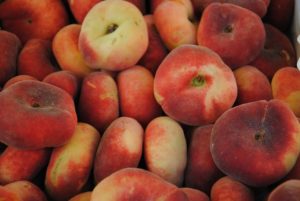
18. Peaches develop green, elongated leaves. They’re lanceolate in shape and have pinnate veins.
19. The flowers appear on the peach tree before the leaves. They consist of 5 pink petals. The flowers are located individually or grouped in pairs. They have both male and female reproductive organs.
20. All varieties of peaches can be divided into two groups, clingstone and freestone peaches. In a clingstone type peach, the flesh is tightly attached to the stone. This type of peach is mainly used for canning. The flesh of the freestone peach can be easily removed from the stone. This type of peach is mainly sold as fresh fruit.
21. The peach used to be known as “Persian apple” because ancient Romans believed that the peach originated from Persia.
22. Peaches are used in the cosmetic industry for the production of various lotions, creams and shampoos. They’re also used often in the perfume industry.
23. In China, the peach symbolizes immortality and unity. Brides use peach flowers to decorate their hair during their wedding ceremony.
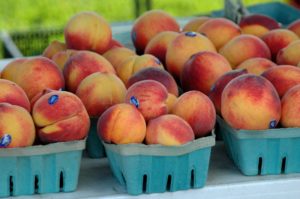
24. Spaniards brought peaches to South America and the French introduced them to Louisiana. The English took them to their Jamestown and Massachusetts colonies. Columbus brought peach trees to America on his second and third voyages.
25. True wild peaches are only found in China. Unlike the cultivated fruit, the wild peach is small, sour and very fuzzy.
26. The sweetness of the peach is due to the “honey gene,” a dominant gene that is found in all Chinese peach varieties. Europeans and Americans have typically cultivated the yellow skin, yellow flesh varieties of peach, which have a higher acid content.
27. The finest peaches of all are considered to be the “peches de vigne”, which are small, red fleshed fruits grown in vineyards in France and generally found only there.
28. You can ripen peaches by placing them in a brown paper bag for two to three days. Sliced, fresh peaches should be tossed in lemon or lime juice to prevent browning.

